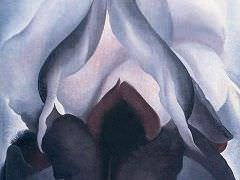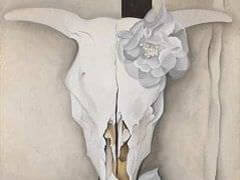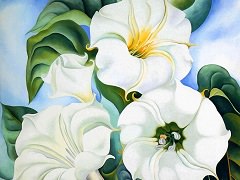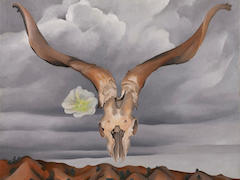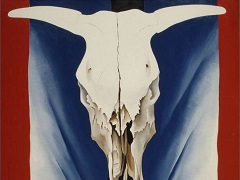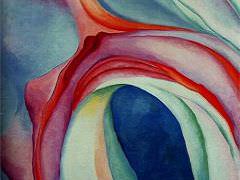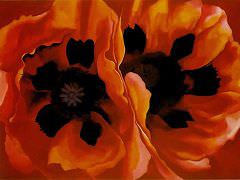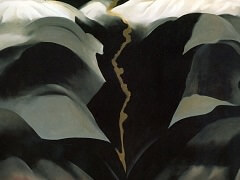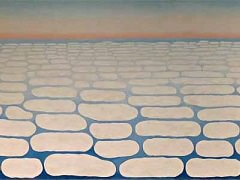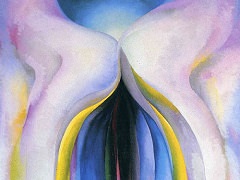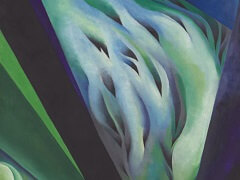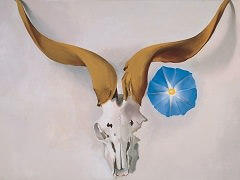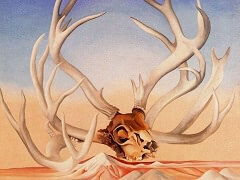Summer Days, 1936 by Georgia O'Keeffe
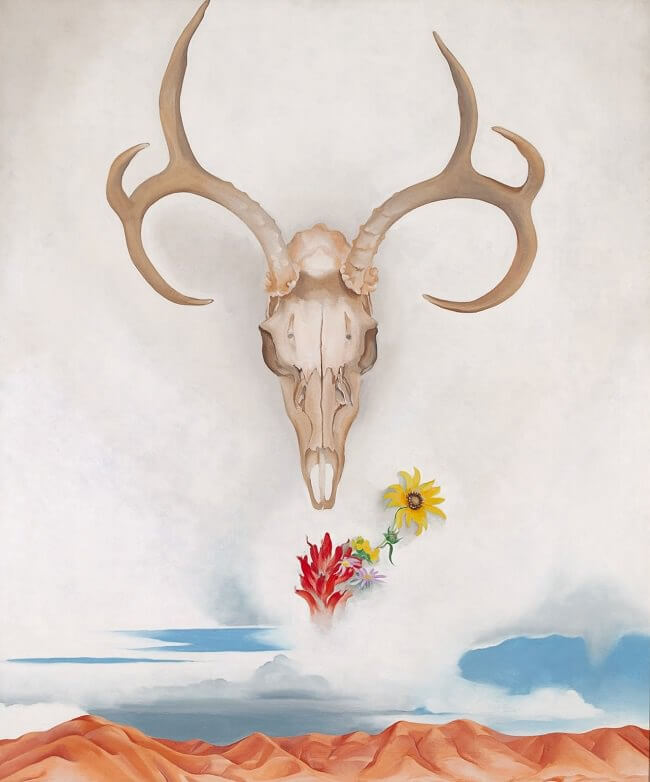
In the 1930s and 1940s, O'Keeffe's reputation and popularity continued to grow, earning her numerous commissions. Her work was included in exhibitions in and around New York. O'keeffe's most effective composition of bones in the landscape appeared in 1936, with Summer Days; the large canvas is also among her most ambitious evocations of the arid country of which she was by then an owner, having purchased the house at Ghost Ranch the preceding year. In 1933, O'Keeffe had written of the bones as "strangely more living than the animals walking around," and in 1936 painting her response is given visual form.
Summer Days, a painting featuring a deer's skull adorned with various wildflowers, against a desert background in 1936, became one of her most famous and well-known works. The scalar relationships between the foreground bones and the background desert is ambiguous; the closely viewed skeletal parts dominate the foreground, but nothing mediates between the bony "here" and the distant "there". In short, the middle ground seems to have dropped out of O'Keefe's composition, just as it had in the heads hovering above the desert horizons, in another skull masterpiece - Ram's Head with Hollyhock.
During the 1940s O'Keeffe had two one-woman retrospectives, the first at the Art Institute of Chicago(1943), and the second in 1946 at the Museum of Modern Art (MOMA) in Manhattan, the first retrospective MOMA held for a woman artist. O'Keeffe enjoyed many accolades and honorary degrees from numerous universities. In the mid-1940s, the Whitney Museum of American Art in Manhattan sponsored a project to establish the first catalog of her work.

